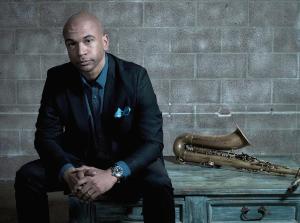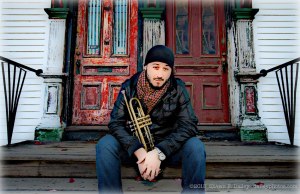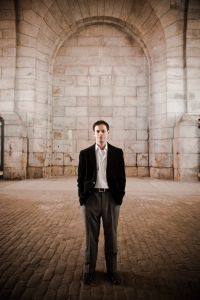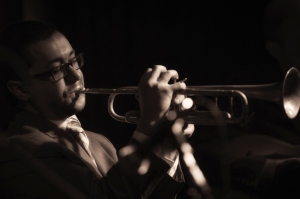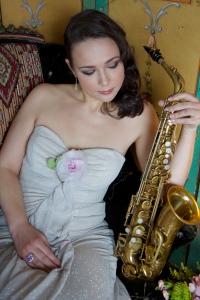Dear listener,
Firstly, many thanks to you for your support of this project, a project that is near and dear to me. I moved to Boston from North Carolina in 1997 to attend New England Conservatory to major in Jazz Trumpet Performance. At the time, the Thelonious Monk Institute was integrated with the Jazz Studies program at NEC. They gave concerts on campus as well as off. One of those concerts took place at the Isabella Stewart Gardner Museum. I attended on the of the concerts there once and noticed that there were empty frames on display in the museum. I didn’t understand the meaning at the time, but fast forward 20 or so years, I came to find out about the heist and the ensuing investigations that have taken place via Last Seen, a podcast produced by a local public radio station and newspaper. After taking in the beauty of the works I decided to commission myself to write a piece inspired by each of those works.
The Songs:
Disc 1:
A Lady and Gentleman in Black (Rembrandt) – The lady and gentleman in this work are indeed dressed in all black, looking to me like they are ready for an evening in the town (or village)! The melody of my composition strictly uses the black notes on the piano. This was the first song I completed of this set of music and I intended it to be the funkiest, blues-infused piece on the recording!
Cortege aux Environs (Degas) – In this scene by Degas, we see a multi-layered, almost translucent, snapshot of a party of folks traveling along a path with an incline. They seem to be in conversation as they travel along, and it’s not clear which direction they are traveling in this painting. I took a personal approach to composing a song for this piece by connecting the color scheme employed by Degas with my experience living with synesthesia.
La Sortie de Pesage (Degas) – Degas portrayed a scene which looks to be from a horse race in this painting. There are folks filing in line to either buy tickets or place bets and the rest are going to their seats. Amongst the crowd are two jockeys, assumingly making their way to the track. In assuming that this is what’s going on in the painting and also realizing that I could be totally wrong with all of those assumptions, I compelled myself to write a piece that would feature several series of deceptive harmonic cadences (within 3 main sections), a sing-songy vertical melody supported by a “gallopy”, sneaky rhythm in 6/4 time.
Christ in a Storm on the Lake of Galilee (Rembrandt) – This historical depiction by Rembrandt is epic and vivid in its’ visual capture of a tumultuous situation. In this work, I spotted 15 th individuals battling the storm on this lake, so I decided to compose a piece in 15/8 time. Kendrick sets up the rollicking, shuffle groove which introduces a rangy, turbulent theme, followed by intense trading of choruses by Mark, Joel, and me.
A French Imperial Eagle Finial – This song is the second song that was written for a piece in this set that was not a piece of visual art. Seeing this eagle finial for the first time immediately moved me to write and brisk piece with a flighty melody for the band.
Chez Tortoni (Manet) – The gaze within the gentleman’s eyes in this painting as he’s sitting at Café Tortoni in Paris is one of urgency and mystique. This gave me mixed emotions so I wrote a mixed-meter song where the harmonic landing spots were bandied between major and minor as a nod to the color scheme of the portrait.
Disc 2
Program for an Artistic Soiree (Degas)– This simple, elegant work by Degas appears to me like a sketch several ideas that happen to be a part of the same canvas. There’s an air of smokin’ song and dance in this sketch that I find to be quite sneaky for some odd reason. This work really makes me wonder what was going on inside the imagination of Degas. This drove me to write a danceable, “sleuthy” song for this piece, drawing from my 3rd stream influences. The solo sections of this song, which feature myself, Joel, and Edward, alternate between major and minor for the entire chorus.
An Ancient Chinese Gnu – This song was written for one of the two pieces of art that were stolen that actually was not a piece of visual art. This piece resembles a sort of vase with a porous base and a body that flares out exactly like the bell of a trumpet. I wanted to give this piece a song that primarily stuck in the folksy, pentatonic-ish, rangy, melody in the trumpet to give the song an Asian melodic bend.
The Concert (Vermeer) – In this visually stunning piece by Vermeer, you see a trio of musicians performing together and they appear to be deeply involved in the moment of the music. My goal for writing a song for this painting was to have it be the one of the more lyrical pieces of this set of music, in an attempt to capture the essence of what could have been heard during the occasion that was depicted in the work. When I was in the middle of finalizing the arrangement of this piece, I played it for my 5-year-old daughter and she found it to be interesting enough that she continued to ask me to play it again. I was impressed to later find out that she had committed parts of the song to memory.
Landscape with an Obelisk (Flinck) – There is something very serene, stoic, but at the same time very powerful about the view of the Landscape with an Obelisk by Flinck. There is a lone obelisk and what looks to be an ancient tree with a strong, gnarly trunk, each standing tall, perhaps in search of the sun on a cloudy day. At the foot of the tree there are two people, one on horseback and one standing. They seem to be in searching as well. I wrote a contrafact based on one of my favorite compositions entitled Like a Flower Seeking the Sun by reedman Myron Walden. Within this track, I bookended it with a flowy intro and outro with rubato, in an attempt to capture the quality of the water in the middle of the painting.
Self Portrait (Rembrandt) – I found a lot of beauty and symmetry in the Self Portrait by Rembrandt. He appears to have a perfectly round, strong jaw with piercing eyes and long, curly hair on set to one side. I composed a melody based on Miyako, one the most harmonically-symmetrical, gorgeous songs by one of my favorite composers, Wayne Shorter.
Three Mounted Jockeys (Degas) – This interesting work features a triple image of 3 jockeys mounted on a horse, 1 that’s right-side up, and 2 that are upside down. This song is in a brisk 6/4 tempo with the melody being split into 3-bar phrases (1 for each jockey).
I’d like to give a huge thank you to Jimmy and Dena Katz, along with all the folks at Giant Step Arts for helping me bring this project into fruition. Also hats off to Mark, Joel, Edward, and Kendrick for your supreme artistry, the people at the Intercontinental Barclay, Dave Darlington, Ann Braithwaite, and to my wonderful wife Colleen and daughter Camilla!
